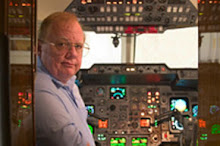“All Things Aviation”
September 17, 2007
“Being Prepared”
Thoughts about Steve Fossett and crash landings
Sparks, Nevada, USA – On September 4th American adventurer Steve Fossett was reported missing on a flight in a Bellanca Super Decathlon while looking for a place to attempt to set the world land speed record.
While a lot has been written about this, it brought to mind a trip my wife (also a pilot) and I took in our Piper Chieftan a number of years ago to Cabo San Lucas, Mexico. I had been flying to Baja California for many years, and we wanted to vacation for a couple of weeks in the sun. In addition, my wife has always been interested in my checkered past, and wanted to visit some of the places I spent time before we got married. When I was in the U.S. Air Force I had spend time in San Angelo, Texas, so that was one of the stops we made along the way.
What does this have to do with Steve Fossett you ask? Well, I have always been the fearless adventurer, renting cars in strange countries and driving off. My wife, on the other hand, has always been more cautious and plans everything out. According to the news, Steve Fossett was always well prepared, and had survived many problems during his adventures.
For those of you who do not know, a Piper Chieftan is an eight place cabin class twin engine aircraft which has wing lockers above the wing and behind the engines. Needless to say, we had a couple of suitcases for our stay in Cabo; however, all of that extra space would not go to waste!
My wife crammed every square inch of the wing lockers with survival gear, ranging from enough bottled water for a month, rain slicks, tarps, packaged meals, hand-held radio, flashlights, extra batteries and on and on. Fortunately all of this did not add any significant amount of weight, but we sure were prepared for any eventuality!
We filed IFR for our trip, and as we crossed the Mexican desert and mountains it got very interesting. First, my wife became slightly airsick with the turbulence over the mountains, so she kept watch for a dry river bed or arroyo for us to land in when the engines quit. Then, working the radios she was amazed that the only time we ever talked to a Mexican controller was when we were within about 30 miles of an airport with a VOR we were passing over. The biggest surprise to her was that the controllers seemed surprised we were there! But, I have flown this route before, and it is par for the course at low altitudes.
I have long held the opinion that if you are well prepared nothing will ever happen, but if you aren’t well prepared, look out! As usual, the trip was uneventful and we arrived safely in Cabo. The return trip was basically the same, except that a belt for one of the generators separated and had to be replaced.
I have been flying for over 45 years in all kinds of aircraft, and have experienced two incidents with aircraft. One with a Cessna 411 many years ago, and more recently with a little yellow Piper Cub which bit me in the rear. Fortunately, no one has ever been injured, but it hurts to see your aircraft damaged.
One further thought, though, is that pilot’s have to be very careful about two critical items in the cockpit – sun glasses and headsets. Sun glasses are very important because we are often above clouds and flying into the sun, headsets because it is very important to hear and communicate clearly with ground controllers.
If you would like to learn more about sun glasses I encourage you to visit Sunglasses for Pilots, and to learn more about headsets visit Aviation Headsets.
John M. White, ATP, Mba
Aviation Sources
Monday, September 17, 2007
Subscribe to:
Posts (Atom)
